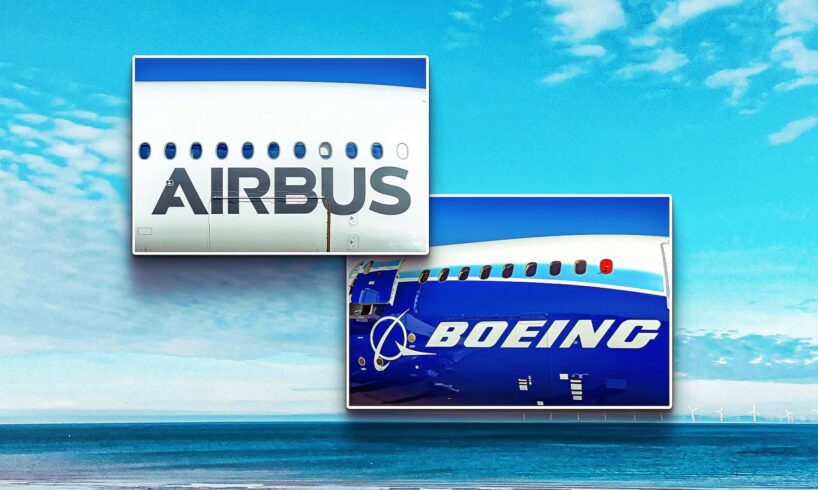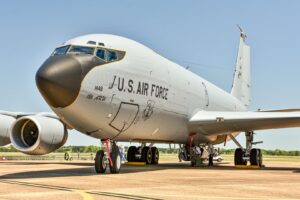
Two massive planemakers dominate the global market for jet-powered airliners. In the United States, there is Boeing, a legacy manufacturer that emerged from multiple mergers of different massive aircraft manufacturing conglomerates over the years. Despite ongoing difficulties related to its troubled Boeing 737 MAX program, the manufacturer remains America’s largest exporter and one of the nation’s most important companies. Across the Atlantic in Europe, there is Airbus, a significantly younger manufacturer, but today it stands as the commercial aircraft manufacturing industry’s most important player.
Stock Code
AIR
Business Type
Planemaker
Date Founded
December 18, 1970
CEO
Guillaume Faury
Headquarters Location
Toulouse, France
The next two major aircraft to hit the market will be the Boeing 797 and the Airbus A390, aircraft which will be so named to fall in line with the two manufacturers’ naming conventions. At the end of the day, these will be the most important aircraft to enter service with airlines next, and each could have a vastly different impact on the market. Let’s take a look at these two future development concepts and evaluate what Boeing and Airbus might be about to build next.
What Is The Story Behind The Boeing 797?
Photo: Boeing
Let’s start by taking a deeper look at the Boeing 797. US-based planemaker Boeing made an error a couple of decades ago when it ended production of the Boeing 757, an aircraft that perfectly bridged the gap between smaller narrowbody jets and large widebody aircraft. To address this capacity gap in its lineup, Boeing began to develop the New Midsize Airplane (NMA), an aircraft that was unofficially referred to as the Boeing 797. The principal purpose of this aircraft type would be to fill the middle-of-the-market segment, which had until that point been mostly unserved by Boeing aircraft.
Back in 2015, Boeing’s research analysts determined that this market was large enough to be lucrative enough to support a new clean-sheet aircraft. Boeing quickly got to work designing the aircraft and attempting to find potential buyers for the jet. By 2017, multiple different international airlines had expressed their interest in purchasing a composite, seven-abreast twin-engine airliner that featured an elliptical cross-section. This new jet would be named the Boeing 797 to fall in line with the airline’s current naming conventions, according to Popular Mechanics.
This aircraft would be offered in two different variants. The first of these would seat 225 passengers and would offer an extended range of 5,000 nautical miles. A 275-seat variant that could fly up to 4,500 nautical miles would also be available. Multiple third parties attempted to determine the potential size of this kind of market, and most settled upon a size of roughly 2,000-4,000 jets. Boeing forecasts indicated that the demand would likely lie towards the top of this range.
Related
The Boeing 797: What’s The Latest?
There is little new information about the midsized 797 as the A321XLR fills the market and JetZero develops a new blended wing body aircraft.
A Deeper Look At Everything The 797 Will Bring To The Table
Photo: Dale Coleman | Wikimedia Commons
The Boeing 797 promised to bridge a capacity gap that global air carriers were desperate to fill. The jet would come along with a purchase price of between $65 and $75 million, meaning that it could comfortably be worth the investment for many global carriers. The NMA promised to generate more than 30% more revenue in comparison to narrowbody jets on the market today, while also offering 40% lower overall trip costs in comparison to widebody jets like the Boeing 767, according to Flight Global.
The jet was to be one of the most powerful on the market, with a new ultra-efficient engine set to be designed for the jet. This engine was rumored to be a turbofan designed by GE Aviation or Pratt & Whitney, and it would be rated at 50,000 pounds of thrust. In order to offer airlines maximum operational efficiency, this engine would have a bypass ratio of 10:1 or more while also having an overall pressure ratio that exceeded 50:1.
Back in January 2020, Boeing put plans on hold for the Boeing 797, as well as a full-scale reevaluation of the project’s potential. The aircraft manufacturer noted that it would be focusing on the Boeing 737 MAX, which had multiple fatal accidents take place in the years leading up to the pandemic. In February 2021, it appeared that the company had plans to develop a shorter variant of the Boeing 797 that would enter service in the late 2020s. However, these plans were put on hold in June 2022 pending the development of more advanced engines.
Airbus Also Has Plans To Develop A New Aircraft
Photo: Airbus
The next Airbus jet to hit the market will most likely be called the Airbus A390, although some industry analysts have suggested that it could be called the Airbus A360. This likely stems from the fact that there is no Airbus A360 or A370 in the company’s lineup despite there being an obvious hole in the organization’s nomenclature.
Nonetheless, Airbus has its sights on something very bold for its next-generation aircraft, one which will be conceived from scratch and based on no preexisting designs. This aircraft will not simply be a larger or smaller variant of something that the company already operates.
Airbus already has jets that fill pretty much the entire capacity range airlines would be willing to serve. It sells low-capacity narrowbodies like the A220, and it offers something for pretty much every customer up to the Airbus A350-1000.
What Is Airbus’ New Plane Going To Be?
Photo: Dillon Shah | Simple Flying
Airbus is currently in the process of developing a next-generation single-aisle jet that is intended to replace the airline’s current Airbus A320 lineup in about 15 years. This jet will include advanced sustainable technologies that will improve fuel efficiency and reduce the aircraft’s carbon emissions. There are a number of specific design features under evaluation, but the company has already decided that the new model will be powered by an open-fan engine, one which will be developed by legacy engine manufacturer CFM International. This new engine promises to offer an improved fuel burn of around 20% on account of a much higher bypass ratio.
This new plane will also feature a “Wing of Tomorrow,” a longer and more slender wing that will fold at the tips to make sure that the aircraft remains compatible with gates that are already designed to serve existing narrowbody aircraft. The aircraft development program’s principal objectives include reducing emissions and maximizing aerodynamic efficiencies. The jet is also going to be fully compatible with the use of 100% sustainable aviation fuel (SAF), something that will set it apart from existing jets that are limited to a 50% SAF blend.
These latest developments serve as a major bridge for Airbus as the company pursues its ambitious hydrogen-powered aircraft project, one that looks further off than ever. The new propfan-powered aircraft that is currently being evaluated by Airbus will be representative of the company’s large-scale strategic shift towards the development of high-efficiency, lower-emission aircraft. The flight testing process for many of these advanced technologies is set to begin later in the decade.
What Market Would This New Airbus Plane Serve?
This new Airbus single-aisle aircraft is designed to play the same role in global fleets that aircraft like the Boeing 737 and Airbus A320 currently play. This will include domestic flights and transcontinental services, as well as regional international flights within certain markets. The aircraft is expected to compete directly with whatever Boeing decides to replace the Boeing 737 MAX with, meaning that it will serve airlines that operate dense, high-volume routes and seek to minimize both fuel and operational expenses as much as possible.
The aircraft is expected to offer an enhanced range, meaning that it will be able to serve similar markets to a jet like the Airbus A321XLR. The plane could potentially open up more thin long-haul routes due to its impressive operating economics. This could further increase the number of transatlantic routes where current operations are deemed economically infeasible. The anticipated efficiency of the aircraft’s new open-fan engine will make it one of the most sustainable aircraft to ever take to the skies.
Furthermore, the aircraft’s full compatibility with Sustainable Aviation Fuel makes it extremely attractive to airlines that are looking to develop fleets that will not be targeted by stricter emissions restrictions, something especially true in Europe. Low-cost airlines and legacy carriers, alongside other kinds of non-traditional carriers, are all expected to have an interest in the jet.
What Is Different About How Boeing And Airbus Are Developing Future Aircraft?
Photo: VDB Photos | Shutterstock
Airbus and Boeing are both approaching the development of future aircraft in different ways. Boeing is taking what most would think of as the natural route, as the company is looking to fill a gap in its lineup.
This is the safer way forward, but it is also likely to be less lucrative than developing a completely new kind of flying machine. There are only so many carriers that would want this kind of jet, so its potential is somewhat limited.
Airbus is definitely a bit more ambitious when it comes to the future of its commercial lineup, and it also likely has much more interest in ensuring the development of sustainable jets. However, we will simply have to see which of these two development programs more adequately addresses the needs of the market.






